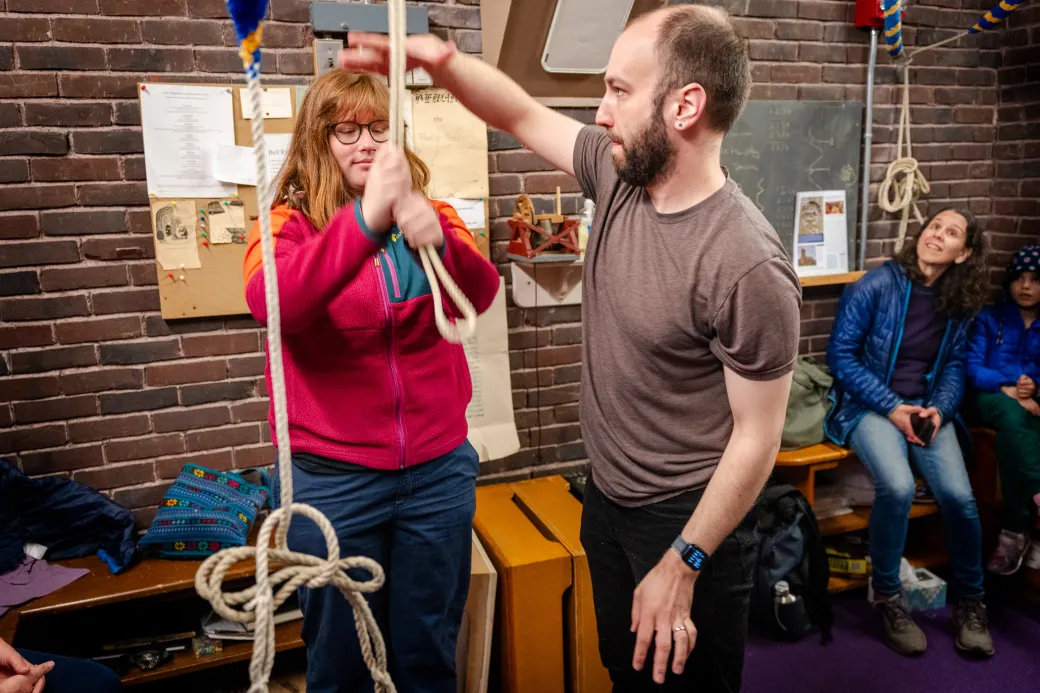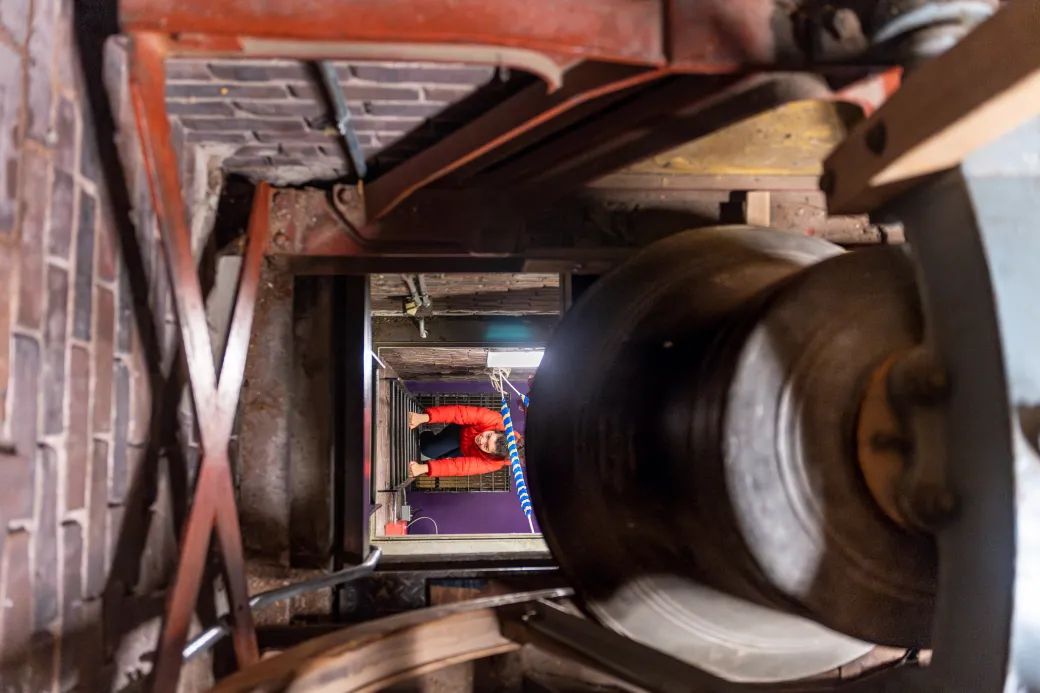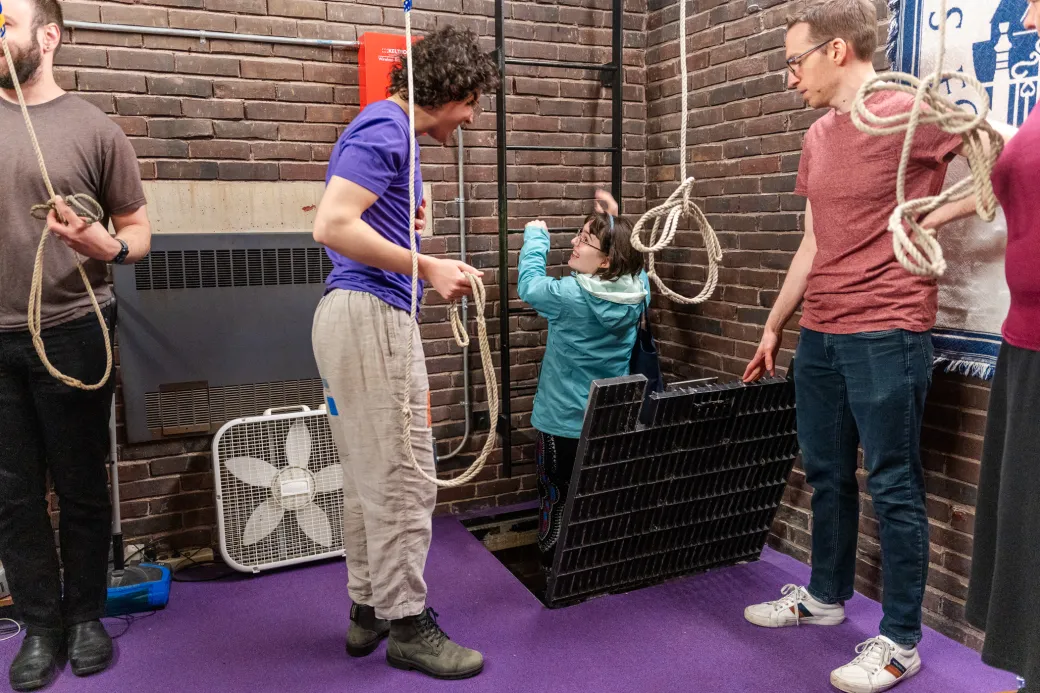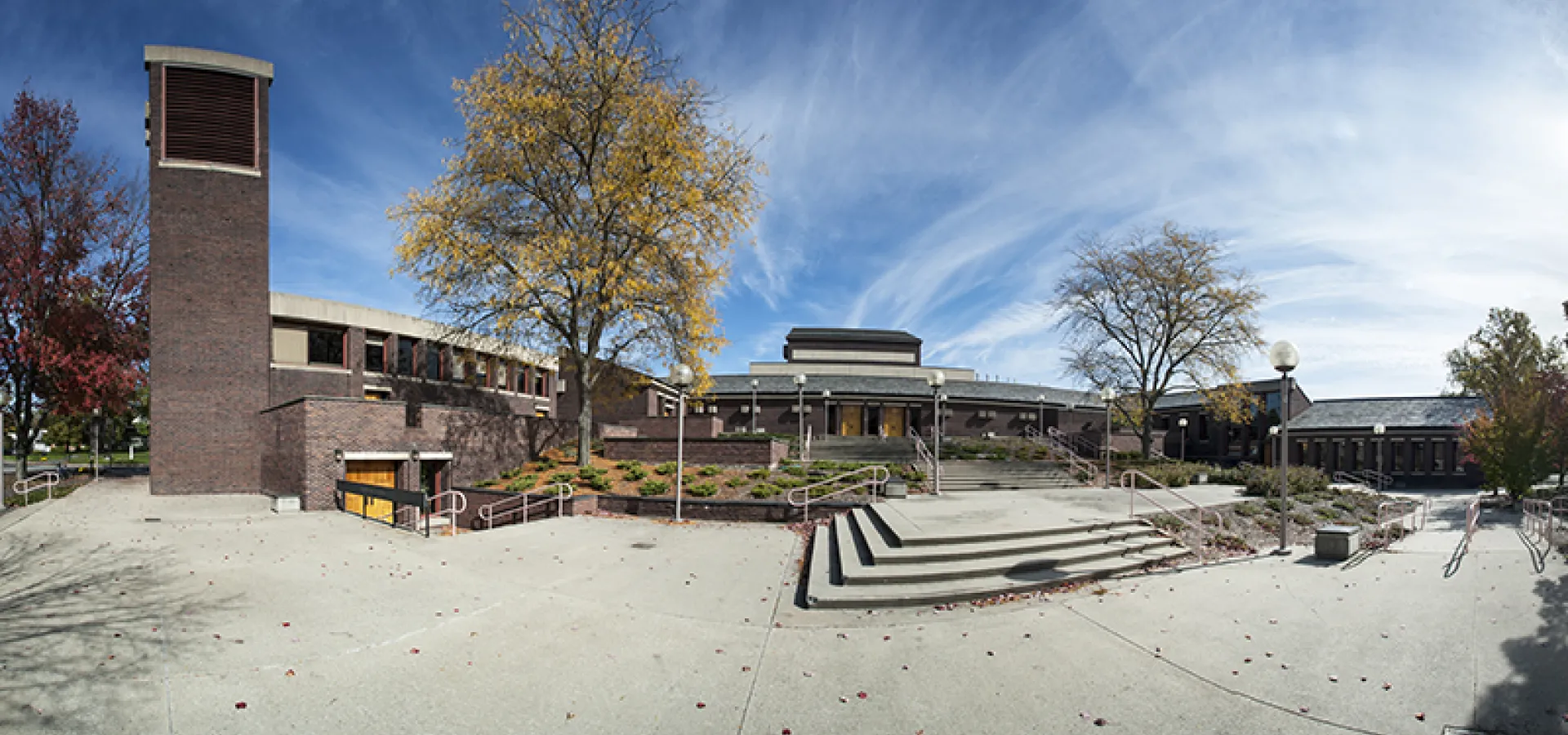
Bellringing
When you hear the eight bells of Mendenhall Center, a team of ringers is inside working together to make them sound. They each ring one bell, carefully timing when to pull their rope to weave the order of the bells into various permutations. Becoming proficient at the technique is a rewarding, lifelong activity that is open to all.
Change ringing is a style of bellringing that continues over 400 years of tradition. At Smith, the bells are rung during regular practices as well as for special college events—including Mountain Day.
What We Ring
Change ringing is a folk tradition going back to the 1600s that can be thought of as a “mathematical and musical team sport.” Instead of playing traditional melodies, change ringers work together to ring weaving patterns that never repeat themselves. Pieces of ringing are composed of rows in which each bell rings exactly once, and a band of ringers memorizes a pattern called a method that determines how each bell moves from one row to the next. Ringing in this style feels a bit like real-time team puzzle solving: it takes careful thought, group coordination and physical skill to get the bells to ring at exactly the right time.
The diagram shows one of the oldest methods, called Plain Bob Minor. The numbers represent individual bells; the red and blue lines trace the paths of bells 1 and 6, respectively. Each row represents the bells ringing once in that order, and the rows are rung one after the other. The red and blue lines show how the bells move earlier and later within the row, weaving together to form the full pattern.
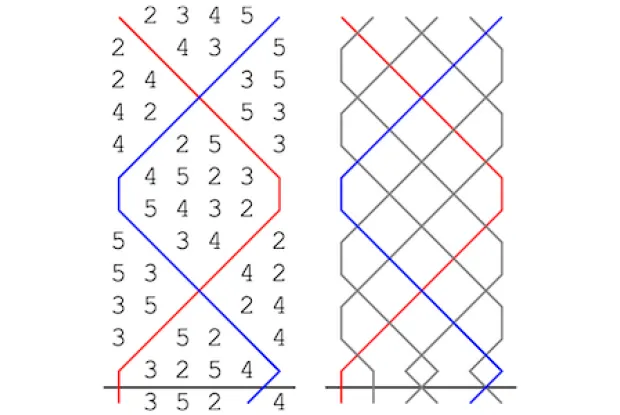
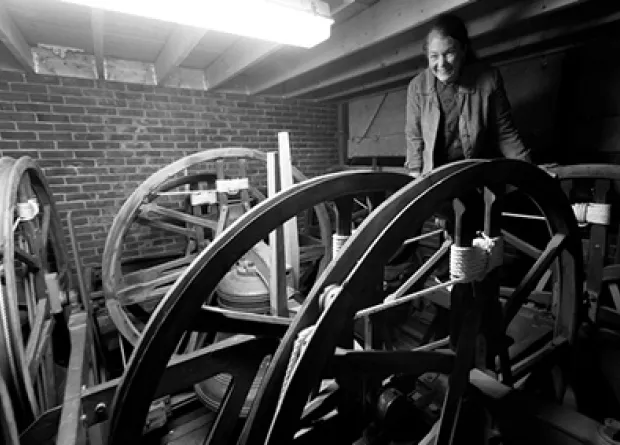
The Smith College Bells
The Smith College bells were cast by Mears & Stainbank in 1967. The eight bells hang near the top of the Mendenhall Bell Tower and range from 300 to 980 pounds.
We owe our gratitude to Alice Dickinson, Professor of Mathematics from 1960 to 1986 and Dean of the College from 1973 to 1976, for her efforts in bringing the bells to Smith and her work in building the change ringing community in North America.
Ringing in Smith Arts Day
Showcasing the arts across campus, Smith Arts Day—held on Saturday, April 13—featured an open bellringing practice. Members of the Smith community tried their hand at ringing in the day!
Bell |
Weight and Width |
Inscription |
Donation information |
|---|---|---|---|
Treble |
2-2-21 cwt (301 lb.) |
In honor of Marjorie Resnikoff Botwinik ’37 |
Donated by Mr. Norman T. Botwinik in honor of his wife |
Second |
3-0-17 cwt (353 lb.) |
I am Grace |
Donated by Janet Carlile Harris |
Third |
3-1-16 cwt (380 lb.) |
To the joy of music, mathematics and memory |
Donated by Edward P. Hutchinson and his daughter Joan P. Hutchinson ’67 in honor of his wife and her mother, Louise Forbes Hutchinson ’36 |
Fourth |
4-0-16 cwt (464 lb.) |
I am Equity |
Donated by Janet Carlile Harris |
Fifth |
4-2-24 cwt (528 lb.) |
I am Diligence |
Donated by Janet Carlile Harris |
Sixth |
5-0-25 cwt (585 lb.) |
I am Courage |
Donated by Janet Carlile Harris |
Seventh |
7-0-17 cwt (801 lb.) |
I am Blessed |
Donated by Janet Carlile Harris |
Tenor |
8-2-11 cwt (963 lb.)* |
Gaudeamus igitur juvenes dum sumus |
In memory of Margaret Nichols Shurcliff; donated by members of her family and friends in the American Guild of English Handbell Ringers |
